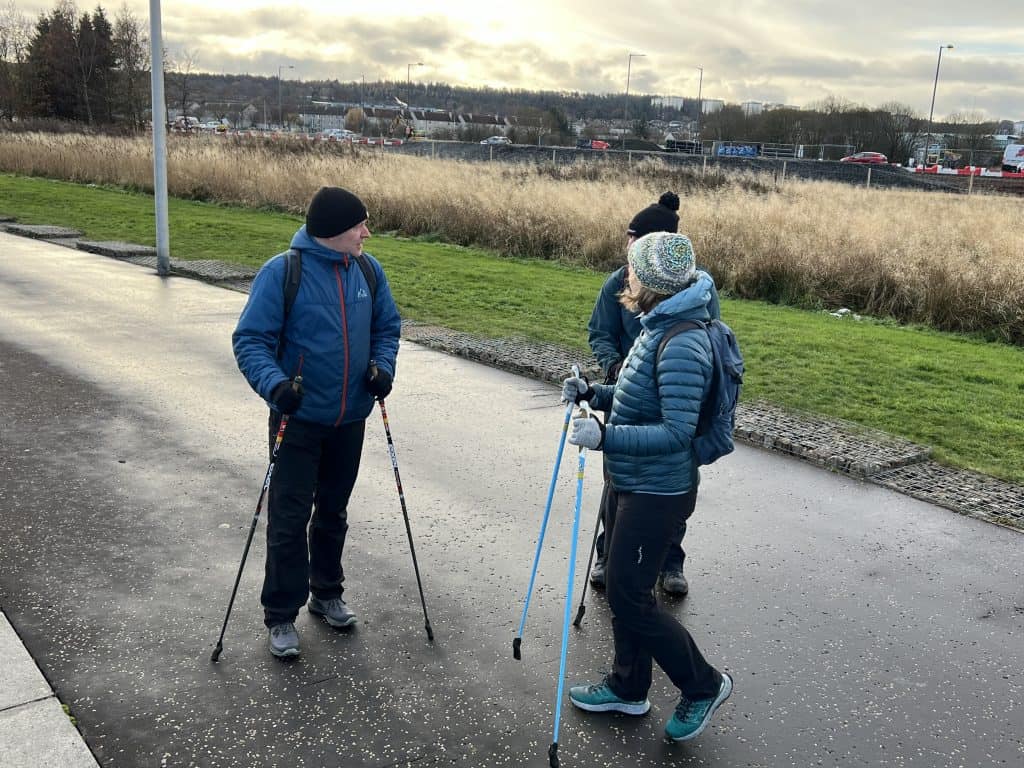Nordic walking engages 80-90% of your muscles during exercise, compared to just 50% with regular walking¹. This remarkable difference has contributed to its growing popularity across the UK as a comprehensive form of exercise.
For anyone looking to enhance their daily walks or seeking a gentle yet effective form of exercise, Nordic walking poles are an invaluable tool. Whether you’re aiming to improve your fitness, recover from injury, or simply enjoy the outdoors more effectively, choosing the right poles and mastering proper technique can transform your walking routine into a full body workout.
What Are Nordic Walking Poles?
Nordic walking poles are specialised pieces of fitness equipment that might look similar to hiking poles at first glance, but they’re engineered with a distinct purpose in mind. Unlike traditional trekking poles designed primarily for stability on rough terrain, Nordic walking poles are crafted to enhance your natural walking motion and engage your upper body muscles effectively.
The magic lies in their unique design features. These poles come equipped with angled rubber tips perfect for pavement use, removable asphalt paws for varying terrains, and ergonomically designed handles with comfortable straps. These straps, often called gloves or demi-gloves, play a crucial role in proper Nordic walking technique, allowing you to release and grip the poles naturally throughout your walking motion.
Most quality Nordic walking poles are fashioned from either lightweight aluminium or carbon fibre. Carbon fibre poles, whilst lighter and offering superior shock absorption, are brilliant for experienced walkers or those covering longer distances. Aluminium poles, though slightly heavier, provide excellent durability and tend to be more budget-friendly.
When examining Nordic walking poles, you’ll notice several essential components:
- Ergonomically crafted handles with breathable materials
- Adjustable or fixed-length shafts to suit your height
- Interchangeable tips for different walking surfaces
- Durable yet lightweight construction materials
- Comfortable, adjustable straps for proper form
Understanding these features is vital because they directly influence your walking efficiency and comfort. Whether you’re a complete beginner or looking to upgrade your current poles, knowing these fundamentals will help you make an informed choice.
How to Choose the Right Size Nordic Walking Poles
Selecting the correct pole length is absolutely crucial for maintaining proper form and getting the most from your Nordic walking workout. When poles are too long or too short, you’ll find yourself compensating with poor posture, which can lead to discomfort and reduced exercise benefits.
The general rule for sizing Nordic walking poles is surprisingly straightforward: when standing upright with the pole tip on the ground next to your feet, your elbow should form a 90-degree angle. This means most people will need poles that measure approximately 70% of their height. However, your fitness level and walking style might require slight adjustments to this basic calculation.
Adjustable poles offer fantastic versatility, especially if you’re just starting out. They allow you to fine-tune the length as you develop your technique and confidence. Fixed-length poles, whilst lighter and more robust, require you to be certain about your size requirements before purchasing.
When measuring for your poles, remember to:
- Wear your usual walking shoes
- Stand naturally on level ground
- Keep your shoulders relaxed
- Consider your primary walking terrain
- Factor in any specific mobility needs
Nordic Pole Size Guide
Find your perfect pole length for optimal performance
Recommended Pole Length: 110 cm
Perfect Fit
Your poles should create a 90° elbow angle when planted, ensuring optimal muscle engagement and proper technique
Adjustable Features
Consider poles with adjustable lengths to fine-tune your perfect fit and adapt to different terrains
Optimal Performance
The right pole length maximizes calorie burn and ensures full-body muscle engagement during your workout
Comfort & Support
Properly sized poles reduce strain on joints and provide better balance and stability during your walk
Nordic Walking Technique for Beginners
Proper Nordic walking technique increases calorie burn by 20% compared to regular walking². This significant boost comes from engaging your upper body correctly whilst maintaining fluid movement.
The key to mastering Nordic walking lies in maintaining a natural walking pattern whilst effectively using your poles. Your arms should swing from your shoulders, not your elbows, keeping your movements smooth and rhythmic. Think of the poles as extensions of your arms – they should move naturally with your body rather than being planted forcefully.
Master Your Nordic Walking Technique
Six essential elements for perfect form
Natural Walking Movement
Walk naturally, landing heel-first and rolling through to your toes. This creates a smooth, efficient movement pattern that forms the foundation of Nordic walking.
Relaxed Shoulders
Keep your shoulders relaxed and down, away from your ears. This reduces tension and allows for natural arm movement, maximising the benefits of each stride.
Pole Placement
Plant each pole at a backwards angle beside your opposite foot. This diagonal positioning creates the optimal angle for propulsion and full-body engagement.
Power Through Straps
Push back powerfully through the pole straps, engaging your upper body muscles. This movement activates your core and arms, maximising calorie burn.
Release and Swing
Release your grip on the handles during the back swing, allowing the straps to support the poles. This creates a fluid movement and prevents tension in your hands.
Maintain Posture
Keep your body upright and look ahead rather than down. This alignment ensures proper technique and helps you maintain a confident, effective walking style.
The beauty of Nordic walking lies in its simplicity, but like any skill, it takes practice to perfect. Focus on maintaining a comfortable pace whilst you develop your coordination. Many beginners find it helpful to practice without poles first, focusing on the arm swing movement before adding the poles.
Best Nordic Walking Poles Reviews
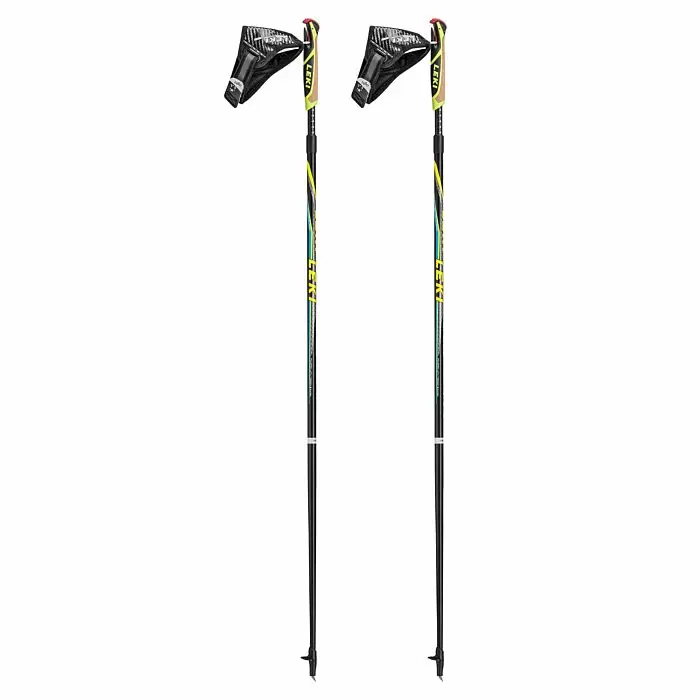
Leki Speed Pacer Vario
- Lightweight carbon construction
- Adjustable length (10cm range)
- Speed spike for good grip
- Ideal for all skill levels
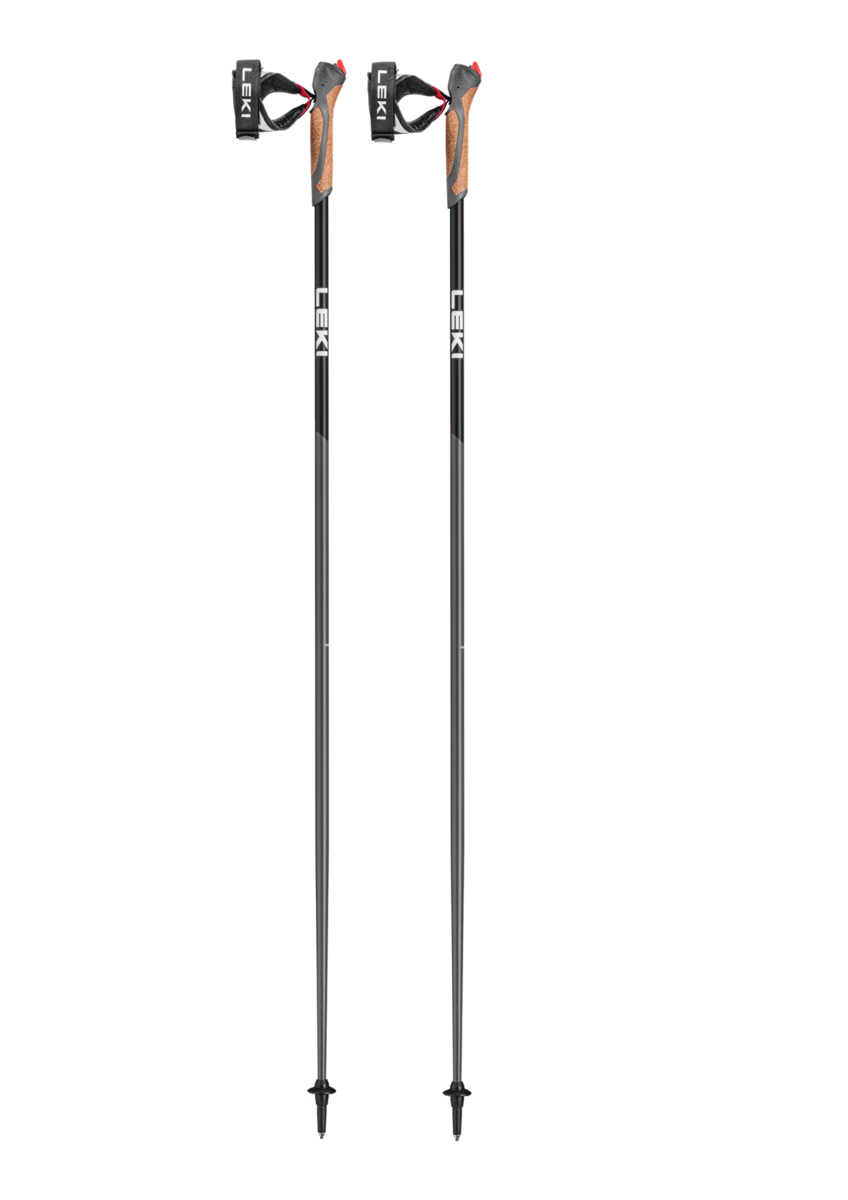
Leki Response
- Fixed length aluminum pole
- Light at 188g per unit
- Multiple lengths available
- Affordable at £54.99/pair
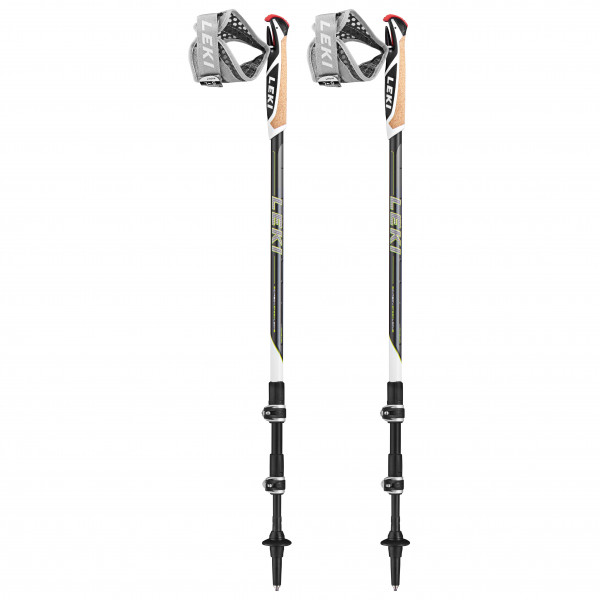
Leki Traveller Carbon
- 100% carbon construction
- Adjustable length (62-130 cm)
- Folds to 62 cm
- Speed Lock 2 system
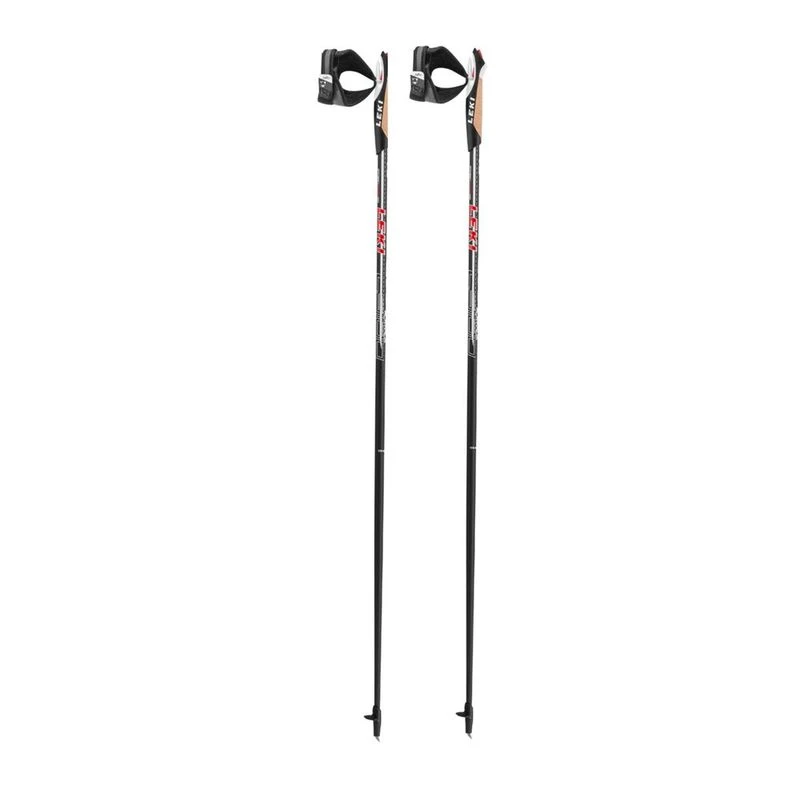
Leki Walker Platinum
- 100% carbon construction
- Ultralight at 166g per unit
- Multiple lengths available
- Minimalist design
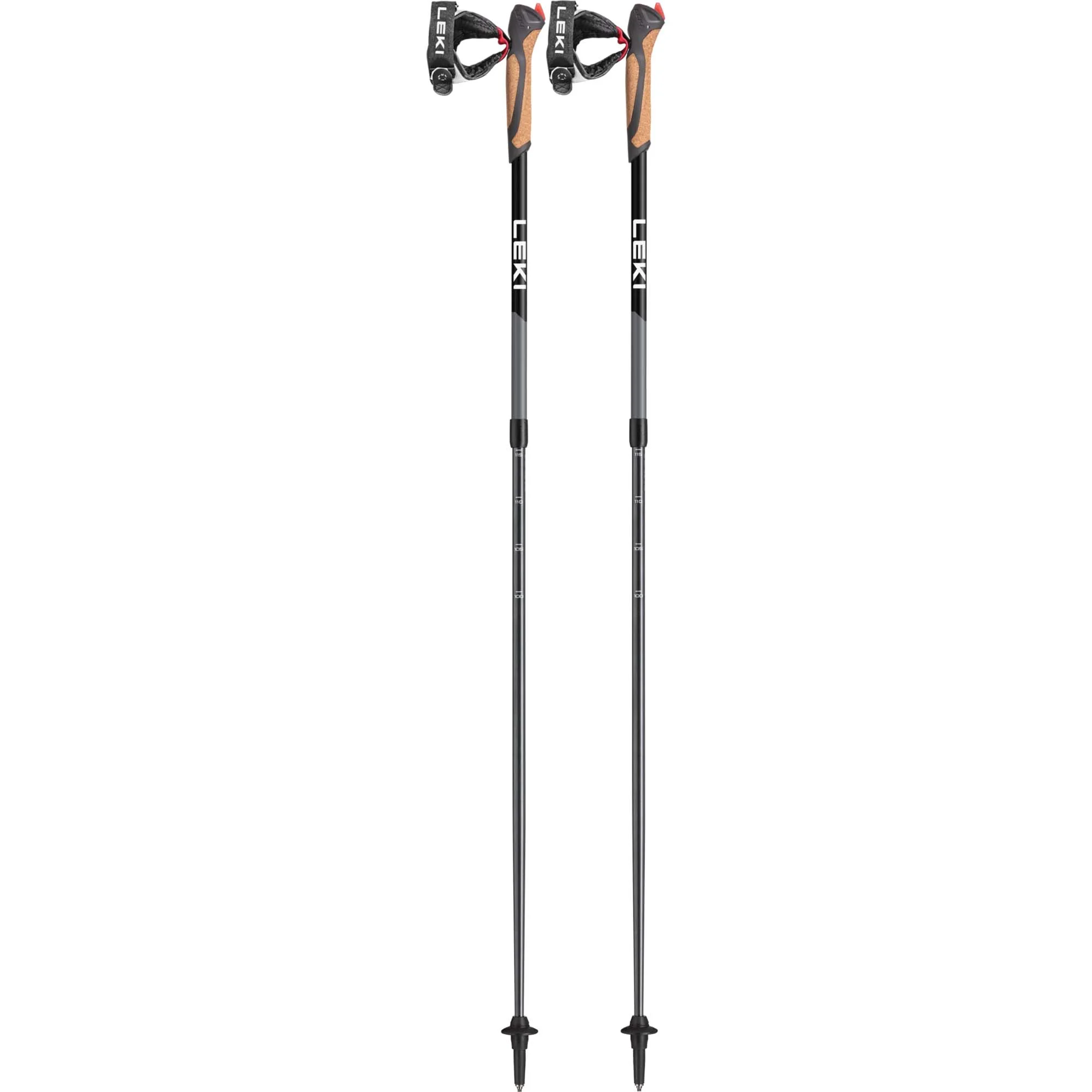
Leki Spin Superlock
- Aluminum construction
- Adjustable length
- Affordable price point
- Perfect for learning
When it comes to choosing the best Nordic walking poles, there’s no one-size-fits-all solution. The ideal poles for you will depend on your experience level, intended usage, and budget. However, certain features consistently appear in high-quality poles that stand the test of time.
Premium carbon fibre poles often represent the gold standard for regular Nordic walkers. Their lightweight construction reduces arm fatigue during longer sessions, whilst their superior shock absorption properties help protect your joints. Look for poles with comfortable cork or foam handles, secure locking mechanisms for adjustable models, and durable tips suitable for your preferred walking surface.
For beginners or those seeking a more budget-friendly option, aluminium poles offer excellent value. Whilst slightly heavier than carbon fibre, they provide outstanding durability and often come with useful features like adjustable lengths. These poles are perfect for learning proper technique and discovering if Nordic walking suits your lifestyle.
Key features to consider when reviewing poles include:
- Material quality and overall durability
- Handle ergonomics and grip comfort
- Strap adjustability and padding
- Pole adjustment mechanism reliability
- Tip quality and interchangeability
Nordic Walking for Seniors
Nordic walking presents an excellent exercise option for seniors, combining the benefits of cardiovascular exercise with balance improvement and upper body engagement. The poles provide additional stability whilst walking, which can help boost confidence and maintain an active lifestyle.
For seniors starting Nordic walking, choosing the right equipment becomes particularly important. Look for poles with features that enhance comfort and safety:
- Ergonomic handles with extended grips for varied hand positions
- Secure, easy-to-operate locking mechanisms
- Comfortable, adjustable straps that don’t restrict circulation
- Durable tips with good grip on various surfaces
- Lightweight construction to prevent arm fatigue
Building confidence with Nordic walking takes time, and it’s perfectly fine to start slowly. Many seniors find it beneficial to begin with shorter sessions, gradually increasing duration and intensity as their technique improves. The added stability from the poles often leads to improved posture and reduced stress on joints, making it an excellent form of exercise for maintaining mobility and independence.
Conclusion
Nordic walking offers a fantastic way to enhance your daily exercise routine, providing a full-body workout that’s suitable for all fitness levels. By choosing the right poles and mastering proper technique, you can significantly improve your workout effectiveness whilst enjoying the outdoors.
Remember, the key to success lies in selecting poles that match your height and fitness needs, combined with developing proper technique. Whether you’re a beginner just starting out or a senior looking for a safe and effective exercise option, Nordic walking can be adapted to suit your individual requirements.
Take time to practice the basic techniques, starting slowly and gradually building up your confidence and ability. With the right equipment and approach, you’ll soon be enjoying all the benefits this excellent form of exercise has to offer. Happy walking!
References
- Figard-Fabre, H., N. Fabre, A. Leonardi, and F. Schena. “Physiological and Perceptual Responses to Nordic Walking in Obese Middle-aged Women in Comparison with the Normal Walk.” European Journal of Applied Physiology 108, no. 6 (2010): 1141-1151.
- Schiffer, Thorsten, Axel Knicker, Ulrike Hoffman, Billy Harwig, Wildor Hollmann, and Heiko K. Strüder. “Physiological Responses to Nordic Walking, Walking and Jogging.” European Journal of Applied Physiology 98, no. 1 (2006): 56-61.


